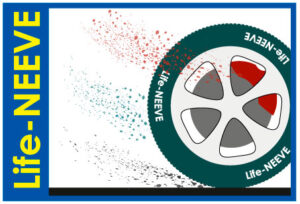-
RDT is part of the LIFE NEEVE project, financed and promoted by the EU through the LIFE programme, with a focus on the environment and climate action.
-
The mission of the LIFE NEEVE programme is to investigate pollution caused by vehicle wheels and brakes and asphalt.
-
RDT’s main task will be measurement through CFD simulation and pattern modelling.
RDT will be part of a working team for an innovative European project to reduce pollution and improve air quality. Promoted and financed by the European Union and coordinated by the University of Seville, RDT will participate along with 10 other entities through its Centre of Excellence (CoE) for computational simulation.
The project, called LIFE NEEVE, is part of the European Commission’s LIFE Programme for the environment and climate action. The project’s mission is to protect air quality by investigating non-vehicle tailpipe pollution (i.e. pollution produced by tyres, brakes and road surfaces). RDT will play a key role mainly in two aspects: on the one hand, collaborating in the creation of the methodology to measure emissions through CFD simulation of wheels and vehicles to know the potential locations of the meters; and on the other hand, modelling the dispersion patterns and the impact of NEE (non-exhaust emissions, those derived from the above elements) in urban areas.
“Numerical simulation in the early stages of any engineering, architectural or civil project represents a differential advance in terms of prediction, with the improvement that this implies in the design, in improving efficiency and cost savings,” explains Francisco Lara, director of the RDT simulation CoE. “Being part of an initiative that can make a difference in social, economic and environmental impact is a huge motivation for our team,” he adds.
A project to deal with a situation that is out of control
This is an innovative and strategic project for the EU in its goal of sustainability and technological improvements that will enable environmentally, socially and economically sustainable development. According to the European Environment Agency (EEA), 400,000 premature deaths occur every year in the Eurozone due to air pollution, in addition to an estimated extra cost of 330 billion euros to mitigate its consequences. In this context, the EEA underlines the scarcity of policies to combat the increase in emissions from NEE sources and their consequences..
The LIFE NEEVE project will be developed along two axes: the main technological objective will be to design, develop and demonstrate innovative techniques and methods for the measurement and reduction of NEE; the main non-technological objective will be to provide guidance on how to replicate and export these innovative results of the study in other road transport sectors and to raise awareness among stakeholders about the dangers of NEE.
RDT will provide all its expertise in thermal simulation engineering and computational fluid dynamics, which allows to know in advance the behaviour of an engineering, architectural, industrial or civil engineering system in which heat exchanges are involved. Along with RDT, also participating in the project are CHM Obras e Infraestructuras, Centro de Investigaciones Energéticas, Medioambientales y Tecnológicas (CIEMAT), HORIBA, ICERBRAKES, Paudire, Universidad Miguel Hernández de Elche, Swedish National Road and Transport Research Institute (VTI), Centro Tecnológico de Construcción (CTCON) and the University of Seville, as coordinator of the consortium and the project, which will last 4 years.
All the information on the progress of the project can be found on the official Life NEEVE project website.
Are you linked to the automotive industry?
Help us shape future policies and technologies to achieve more sustainable mobility solutions across the European Union by completing this survey:
Access the survey

About RDT
RDT is an innovative corporation whose field of activity is the development of advanced engineering projects, participating in projects with a high technological component where it provides flexibility in the outsourcing strategy of large companies. RDT’s mission is to provide engineering solutions that give our clients a competitive advantage based on efficiency, flexibility and reliability. Its main purpose: that engineers enjoy engineering.

